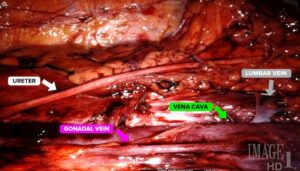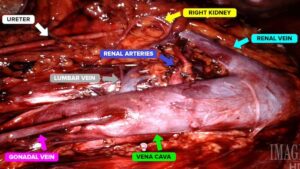Testis Cancer
A Urologist treats perhaps more cancer than any other surgeon, and included in this is the treatment of testis cancer. Below we will try to describe the key elements of how testis cancer presents itself, what tests need to be performed, and then the concept of different cell type forms of testis cancer and how this affects treatment.
Testis cancer is generally a disease of young men in that it usually presents in men in their twenties. There is a form of less aggressive testis cancer called spermatocytic seminoma that is seen typically in men in their fifties, but for the most part, we see young men with this problem. Most commonly, a testis tumor will present as a dull ache in the testicle, not severe pain, and will usually have a hardness of the testicle itself. There can be a fair amount of denial with testis masses and commonly men will present after having a mass present for several months.
It should be pointed out that although we see men almost every day in the office who have concerns regarding what they deem as testis pain, almost always these men have pain above or around their testicle in their epididymis, or sperm plumbing, or pain that is radiating down to their testicle. This is not actual testis pain and is not particularly suspicious at all even though we always get a scrotal ultrasound to be sure.
Testicular Masses
When we see a patient with a palpable mass in the testicle a scrotal ultrasound is mandatory. If a vascular mass within the testicle is confirmed, we will then also obtain blood tests called tumor markers that will be important in future management of a testis cancer case. These three markers are called alpha fetoprotein (AFP), beta human chorionic gonadotropin (Beta HCG) and also lactate dehydrogenase which is less specific to testis cancer but also is an important marker to get. Finally, a CT scan of the abdomen looking for signs of spread is also performed. One of the relatively unique things about testis cancer is that it almost always spreads by the lymph system, and when it does it almost always will be found in very specific lymph nodes in very specific locations in the body called landing zones based on which side the testis tumor is on.
Surgical Treatments
Surgery is the next step. Although a times it may be possible to try to remove only a tumor and not the entire testicle, this is mostly reserved for cases where the few benign tumors that do exist in the testicle are suspected. Removal of only a cancer and not the whole testicle is not considered standard, so most commonly removal of the entire testicle and the cord that supports it is most commonly performed, and this is called a radical orchiectomy. Patients may opt to bank sperm before this, however, usually only one testicle is needed to produce an excess of sperm to achieve later pregnancy. This is an outpatient procedure and recovery is very quick. Dr. Engel thinks of this surgery as more of a data gathering event than a major surgery as the pathology report of the testis is the most important piece of information of all.
It is at this point that we would be ready to discuss a young man’s particular case. The first step is in knowing what cell type makes of the cancer found in the testicle. The most common cell type is called seminoma. It has the best prognosis overall, and has the unique property of being very sensitive to radiation therapy whereas the other cell types are not. It is for this reason that testis cancer treatment is divided into that for seminoma and that for all other cell types – non-seminoma. So, cell type is the first and most important thing to know.
The second key bit of information is the CT scan result. If there are positive lymph nodes then we know the cancer has spread, and as stated above we know exactly where to look on the CT scan. In general, the most common treatment for testis cancer that has spread is radiation or chemotherapy in the case of seminoma and chemotherapy in the case of non-seminoma. Another option that is employed less today than in the past before excellent high cure rate chemotherapy was developed was an operation whose goal is to completely clean out the landing zone in question of all lymph material. Less aggressive and more templated surgical techniques, including the use of robotic surgery, are now used so that ejaculatory dysfunction after surgery is now extremely rare. This operation is called a retroperitoneal lymph node dissection (RPLND). Whether or not a lymph node dissection is offered has to do with how likely spread or metastasis is from features of the pathology report and information provided by the tumor markers.
Right Sided Retroperitoneal Lymph Node Dissection by Dr. Engel (RPLND)
Images show a right-sided robotic dissection of the templated testis cancer landing zone. The boundaries of dissection are the ureter laterally, where the ureter inferiorly, the vena cava medially, and the renal/kidney artery superiorly. Also shown is a lumber vein that must be identified to avoid injury. Also spared are nerves that control ejaculation.
Testis cancer is a very scary disease that occurs in a young man typically before he has started a family and certainly at an age where no one is expecting to have such a serious medical problem. However, it is highly curable even if the cancer has spread and the prognosis is excellent. Testis screening with self-exams is key and one should be encouraged to find this early in the course.






